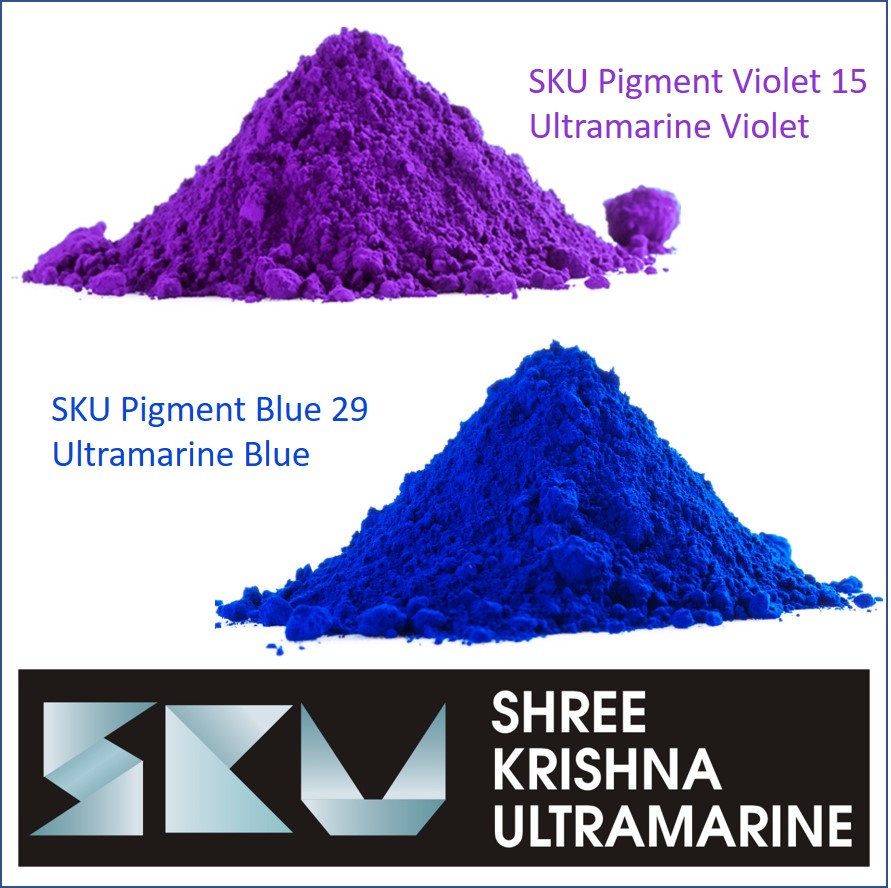Article Release on Details About Ultramarine that Trending on Social Network
Why Ultramarine Pigments Remain the World’s Most Trusted Blue

For centuries, color has influenced art, design, and industry. Among the most celebrated hues, Ultramarine remains unmatched for its timeless brilliance. Today, companies like SKU Pigments specialize in manufacturing high-quality Ultramarine pigments, including Ultramarine Blue, Ultramarine Violet, Pigment Blue 29, and Pigment Violet. From paints and plastics, Ultramarine has become the backbone of modern blue pigments.
Tracing Ultramarine from Lapis Lazuli to Industry
The name Ultramarine comes from the Latin “ultra mare,” meaning “beyond the sea,” a reference to lapis lazuli originally imported from Afghanistan. For centuries, it was the most expensive pigment, used by Renaissance masters to depict divine subjects. It symbolized wealth and divinity.
Modern chemistry made it possible to produce artificially Ultramarine pigments, bringing the once-exclusive shade into everyday use. This breakthrough turned a exclusive pigment into a accessible solution for countless sectors.
Why Ultramarine Blue Leads the Industry
Ultramarine Blue pigments—the synthetic form of Pigment Blue 29—are the most widely used. Known for their lasting vibrancy, they are sustainable and reliable. They are used in:
• Paints and coatings for rich tones.
• Automotive and packaging industries, thanks to chemical safety.
• Publishing and packaging, where clarity is vital.
• Beauty products, given their safety profile.
This balance of economy and brilliance keeps Ultramarine Blue among the top pigments.
The Elegant Appeal of Violet Shades
Ultramarine Violet offers softer tones that appeal in specialty coatings. Pigment Violet derived from Ultramarine is stable, making it ideal for eco-friendly materials.
Its gentle color enhances interior design, while ensuring durability without chemical breakdown.
Industrial Uses of Ultramarine Blue
Pigment Blue—particularly Ultramarine Blue pigments—remains a market leader. It offers tinting strength for:
• Car finishes with resistance to fading.
• Packaging, ensuring stable shades.
• Decorative plasters, adding beauty and durability.
This wide applicability Ultramarine ensures Pigment Blue’s staying power.
The Benefits of Blue and Violet Pigments
• Non-Toxic & Safe: Ideal for cosmetics and toys.
• Heat & Light Resistant: Stable in outdoor use.
• Eco-Friendly: Reduced environmental impact.
• Cost-Effective: Budget-friendly industrial choice.
• Versatile: Across paints, plastics, printing, and construction.
Ultramarine in Modern Industries
1. Paints & Coatings: Decorative finishes.
2. Plastics & Rubber: Safe for packaging.
3. Cosmetics: Luxury formulations.
4. Construction: Plaster and decorative finishes.
5. Printing & Inks: Vivid packaging inks.
The SKU Pigments Advantage
SKU Pigments stands among global suppliers, offering eco-conscious solutions in Ultramarine pigments. Their product portfolio includes:
• Ultramarine Blue pigments for vibrant, bold applications.
• Ultramarine Violet and Pigment Violet for elegance and subtlety.
• Custom shades for tailored applications.
Their reputation is built on customer satisfaction and sustainable methods.
Ultramarine: From Heritage to High-Tech
From lapis lazuli origins to an eco-friendly modern solution, Ultramarine has evolved with industries. Whether it’s the classic brilliance of Ultramarine Blue, the subtle elegance of Ultramarine Violet, or the stability of Pigment Blue 29, Ultramarine pigments remain indispensable.
With SKU Pigments as a leading manufacturer, industries secure reliable pigment supply. As demand for non-toxic pigments rises, Ultramarine will lead in global markets.
Common Queries About Ultramarine
1. What is Ultramarine?
One of the world’s most trusted synthetic pigments.
2. What is Pigment Blue 29?
The standard code for Ultramarine in industries.
3. Where is Ultramarine Violet used?
In fine arts and specialty industries.
4. Are Ultramarine pigments safe?
Certified safe for cosmetics and toys.
5. Why choose SKU Pigments?
Because of quality, eco-focus, and range.